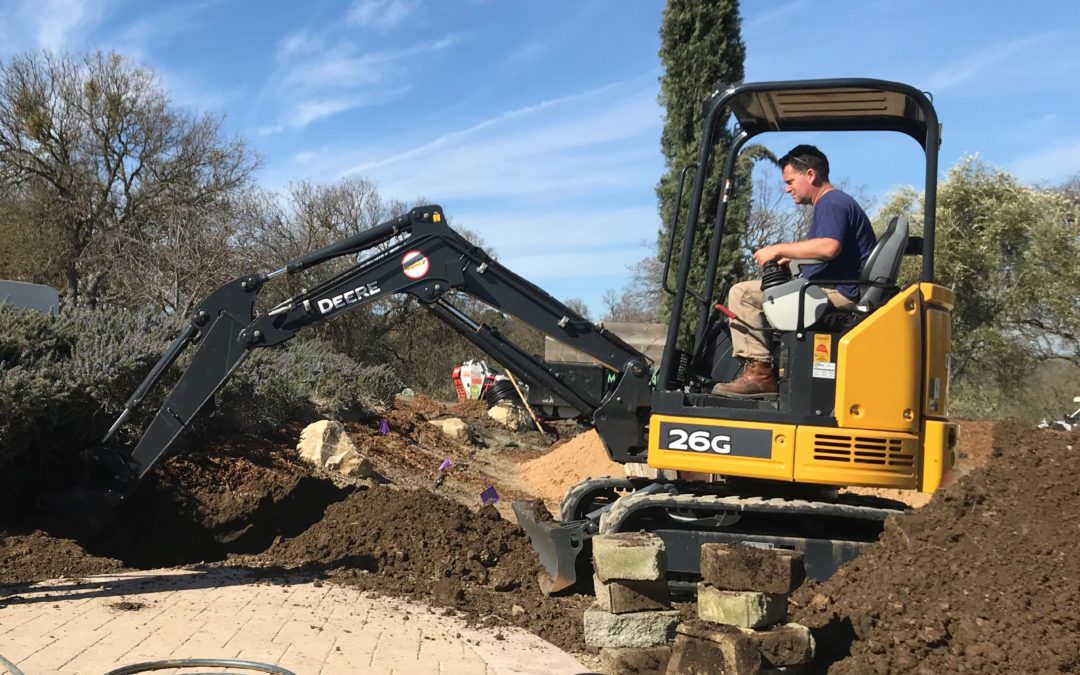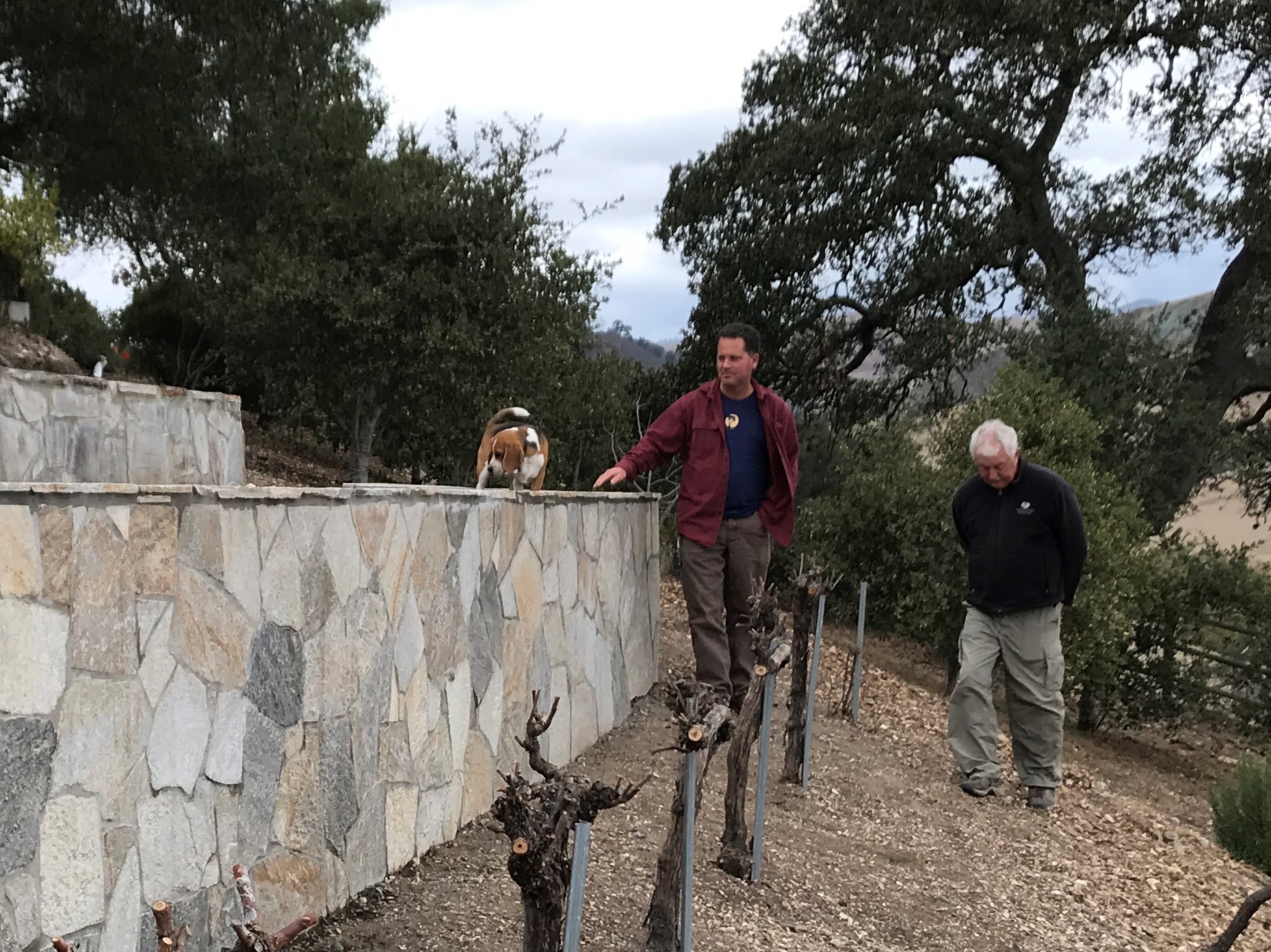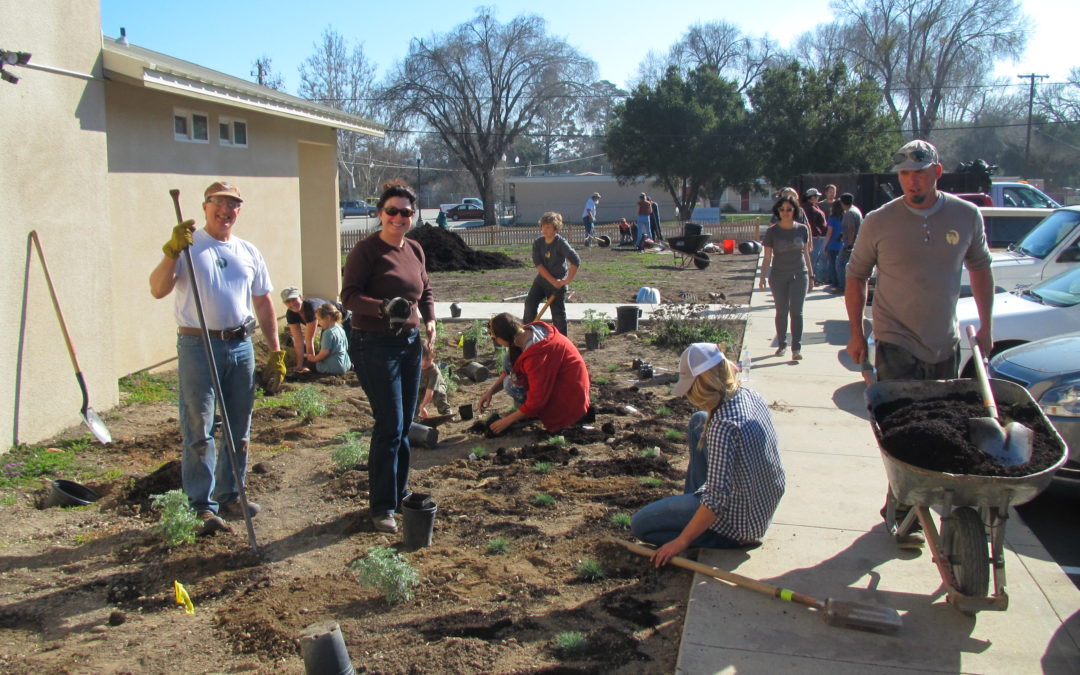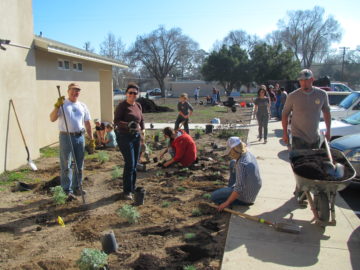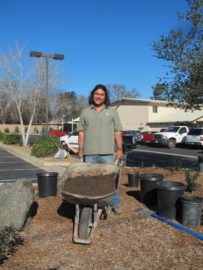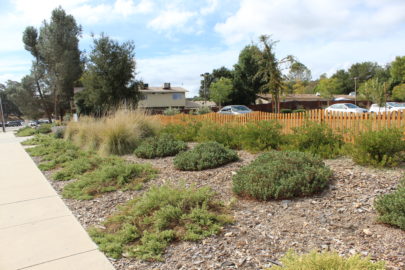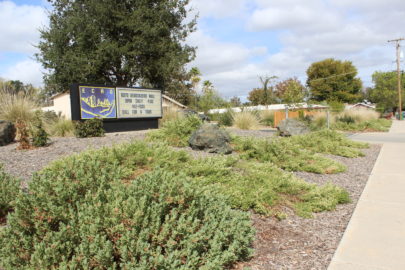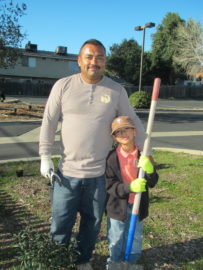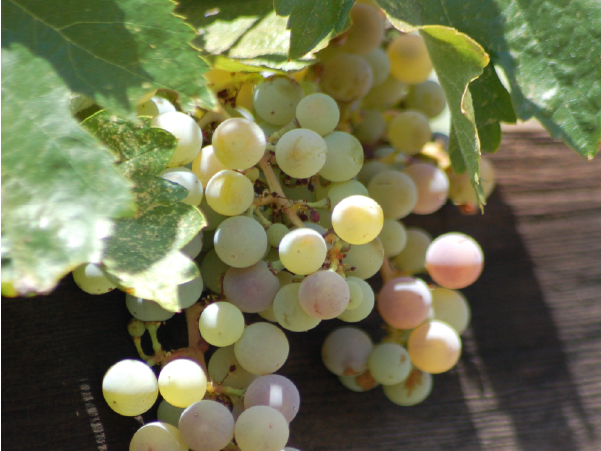
Collaboration Spotlight: Mission San Antonio
Rich History and Old-Stock Mission Vines in Our Backyard
Located on 86 acres of the former Milpitas unit of the Hearst Ranch, the Mission San Antonio de Padua features a large church, a museum, and a gift shop. In 2020, as part of the Mission’s ongoing restoration project, we joined the team to complete a renovation of the Mission’s courtyard garden. Working together with Joan Steele, administrator, we were able to create a beautiful garden designed to showcase the many native plants used by the Salinan Tribe. Although the garden is new, these grounds are rich in history (this year marks its 250th anniversary!), and we asked Joan to highlight one of the few original features remaining in the courtyard garden: its original grape stock.

Heritage grape stock cutting purchased through the Mission San Antonio gift shop.
“The cuttings would have been brought either from Mallorca, Spain, in the 1700s and/or from the area around what is now Mexico City,” explains Joan.
The Franciscans knew they would need to plant a vineyard in the New World to have wine for daily Mass. Following construction of the first irrigation system (aqueduct) in California, the Franciscans and the Native Salinan Tribal Members planted the first vineyard on the Central Coast.
They built an adobe wall around the vineyard to keep the animals out and built a house for the “vineyardist” within the vineyard. As the vines flourished, the Franciscans built two large wine vats and a wine cellar (one of the vats and the wine cellar are still visible today as part of the Mission museum). By 1841 there were 4,000 vines in the vineyard.
The Mexican government secularized the Mission in 1834. It was temporarily abandoned in 1844 and the vineyard continued to decline. Prior to his death in 1882, it is believed Fr. Dorothea Ambris moved some of the vines from the declining vineyard and replanted them inside the Mission courtyard and out in front of the Mission to better care for them.
Joan shares that in 2011 the Mission sent samples of these vines to UC Davis for DNA testing. It was discovered that the grapes are “Mission” grapes – also known as Criolla Chica in South America and Pais in France. While this varietal is no longer available in Spain, this type of grape stock is still used widely in Central and South America to produce the local table wines.
“We are very proud of our historic vines, still producing wonderful annual harvests,” Joan notes. “It is one of our long-range goals to reestablish the vineyard at the Mission, using cuttings from the original vines. We hope to engage the cooperation of local university students to rebuild the adobe walls around the vineyard and grow the historic vines for many years to come.”
Currently, the Mission has some cuttings available through the gift shop when it is open on the weekends. Visit www.missionsanantonio.net to keep abreast of the changing schedule due to COVID restrictions and staffing requirements.

